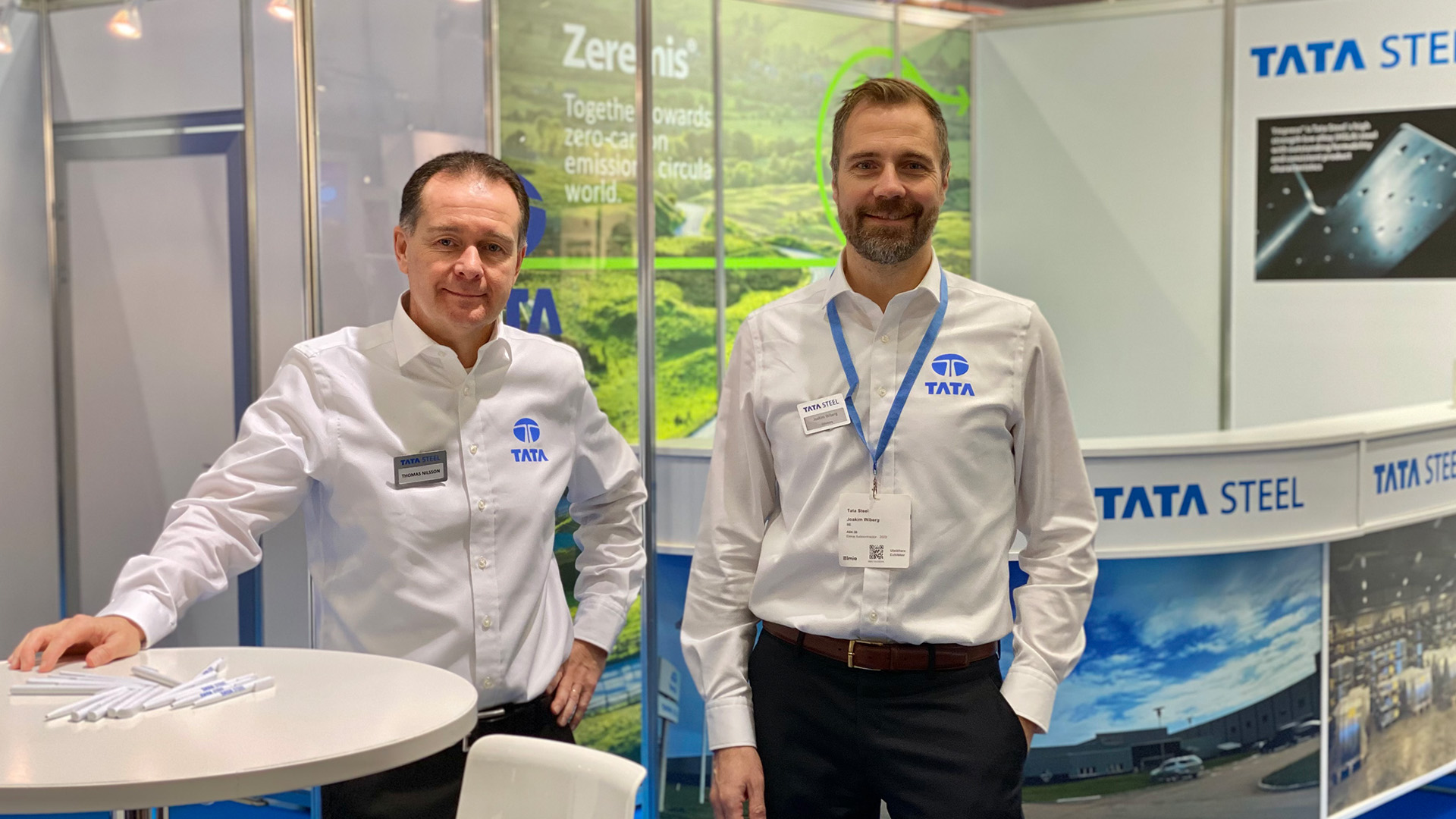Tata Steel’s roadmap for reduced CO2 emissions

“Our goal is to be CO2 neutral by 2045 and to reduce our CO2 emissions by 35–40 per cent up to 2030,” says Joakim Wiberg, Customer Technical Services at Tata Steel.
The plan is to gradually transition to a brand new technology, replacing blast furnaces with brand new DRI (Direct Reduced Iron) plants, where the steel is made in electric ovens. By 2045, both of Tata Steel’s blast furnaces will be replaced by DRI technology.
Powerful investments in new technology
“Changing technology and going all the way towards zero emissions is the most important journey. Introducing DRI technology will contribute to one of the biggest CO2 reductions in European steel making in ten years,” explains Wiberg.
Along the way, Tata Steel offers Zeremis Carbon Lite.
“It’s a solution that enables our customers to reduce CO2 in their scope 3 emissions,” says Wiberg.
Face-to-face meetings in focus
Tata Steel is making a comeback at Elmia Subcontractor after a couple of years’ absence, and their aim is to have productive meetings.
“Meetings on Teams are very agenda-led. There’s no chat before or afterwards so they don’t build relations in the same way. That’s why Elmia Subcontractor is such a good complement to face-to-face meetings,” says Wiberg.
With visitors he mainly talks about products, in this case steel pipes – products that are sold via warehousers and distributors, who in turn are dependent on what their customers demand.
“But we do have products that are not in demand, as customers don’t know they exist.”
Wiberg wants to put an end to that, in part by showing the Hybox TT product.
“It’s a cold formed structural hollow section with tolerances better than the official norm.”
Uncertain price development
His colleague Thomas Nilsson is Sales and Marketing Manager at Tata Steel’s Service Centre in Halmstad, where steel coil and sheet is slit and cut for customers in automotive, construction and other industries.
“I want to present the service we can offer,” says Nilsson.
And how about prices? From historically high levels, the price of steel has decreased recently. But what’s the outlook moving forward?
“There are so many other factors to consider: what’s happening with electricity prices, with the war, with component supply for the automotive industry? It’s very hard to make any kind of reliable prediction regarding prices moving forward,” Thomas Nilsson concludes.
Caption: “Zeremis Carbon Lite makes it possible to reduce the carbon footprint right now,” according to Thomas Nilsson and Joakim Wiberg of Tata Steel.